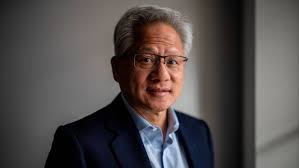
Boost Infrastructure by Accelerating Asset Monetisation
The Chairman of the Securities and Exchange Board of India (Sebi), Tuhin Kanta Pandey, recently highlighted the pressing need for quicker asset monetisation across key sectors in India, including roads, railways, and ports. This move is crucial for bolstering infrastructure development in the country. During an infrastructure conclave organized by the National Bank for Financing Infrastructure and Development (NaBFID), Pandey underscored the significance of the Central government’s asset monetisation plan in fostering a market for Infrastructure Investment Trusts (InvITs).
Pandey pointed out that while the government's initiatives have facilitated growth in infrastructure financing, many state governments have yet to establish their asset monetisation strategies. He emphasized that addressing this gap is essential to further fuel infrastructure creation. The chairman advocated for various financial models, such as InvITs, Real Estate Investment Trusts (REITs), and public-private partnerships (PPP), as effective tools for asset monetisation.
According to Pandey, the scale of capital required for infrastructure is immense and cannot be sustained solely by public resources. “The government and banks cannot, and should not, carry this burden by themselves,” he remarked. Here, he pointed out the pivotal role of the capital market as a powerful engine for mobilising long-term funds. By diversifying risks and ensuring capital is utilized effectively, the market can significantly contribute to infrastructure financing.
Capital markets attract long-term patient capital by channeling the savings of pension funds, insurance companies, and sovereign wealth funds into infrastructure assets. This not only helps in diversifying funding sources but also offers a model for risk-sharing among investors. Pandey also mentioned various measures taken by Sebi to strengthen the connection between infrastructure and financial markets.
Despite the progress made in raising funds through municipal bonds and REITs/InvITs, Pandey acknowledged that the amounts are still relatively small compared to the trillions needed for infrastructure development. He noted that the investor base in India remains narrow, with institutional investors dominating, while retail and foreign investors are still hesitant to participate.
Furthermore, Pandey pointed out that limited liquidity due to thin secondary market trading discourages broader participation in infrastructure financing. He urged all stakeholders to collaborate in accelerating asset monetisation efforts to unlock the full potential of India’s infrastructure landscape.








